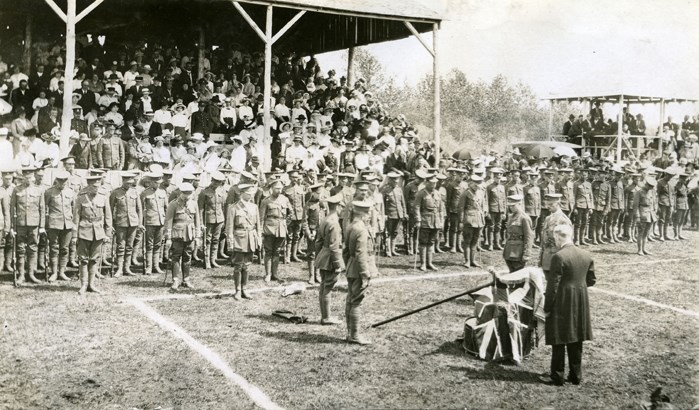It was 100 years ago during the summer and fall of 1916, the immense, gruesome and generally futile Battle of the Somme was fought in northern France. For a great many, the Somme has become an epic symbol of the incomprehensible horrors of trench warfare during the First World War.
The Battle of the Somme commenced on July 1, 1916 with one of the greatest artillery barrages and frontal assaults in history. Hundreds of thousands of British and Allied troops “went over the top” and attacked the highly fortified German trenches.
By every measure, the first day was a disaster. The British forces suffered 57,470 casualties. The Royal Newfoundland Regiment was particularly hard hit. Of the 800 men who went into battle, only 68 were able to answer roll call the next morning.
Despite the phenomenal disaster, the British generals did not reconsider their plans. They would not admit that they had been wrong on such a massive scale. Hence, wave after wave of assaults were carried out for several more weeks, with little or no success.
By the end of the summer of 1916, the British and Allied forces were showing serious signs of battle exhaustion. Tragically, instead of calling off the offensive, new troops, including the Canadian Corps, were put into the front lines.
The first reports, after these renewed assaults, suggested that casualties had been light or “no more than would be expected.” The arrival, shortly afterwards, of the daily casualty reports, with their long lists of the killed and wounded, quickly put the lie to the claim.
Several men were reported as missing in action. What wasn't mentioned was that many of them had been directly hit by shellfire and there was really nothing left of them to find.
Among the first of the men from Innisfail reported killed was Gregory Bryan. He lost his life on Sept. 15, 1916, the first day the Canadians went into action. His father, George, had been the station master for the CPR in Innisfail and later served on town council and the school board. Gregory was only 21 when he died.
Alfred Forshaw also lost his life on the first day of heavy fighting. He had served in the British Army in India and with the local militia (15 Light Horse) when he first moved to Innisfail to work as a carpenter. He was with the 66th Battalion when he was killed.
Lieut. Lawrence Carrick, also formerly of the 15 Light Horse, had been a successful rancher and storeowner at Pine Lake. He had enlisted with the First Contingent just after the war was declared. On Sept. 15, while he was leading his platoon into battle, he was shot through the head by a German sniper. He was initially buried by his men in a nearby shell hole.
Lloyd Mainwaring of Innisfail was killed in action on Sept. 25, just before the Canadians attacked Thiepval Ridge. He had also served as a lieutenant in the 15 Light Horse before the war.
Frank Leslie Baker had enlisted with the 12 Canadian Mounted Rifles. He was killed in action on Sept. 29 at Thiepval Ridge. He has no known grave, which means he was killed by shellfire. Gordon Beckett was in the same unit as Frank Baker, and killed on the same day as his comrade. He also has no known grave.
These are just a few examples of the casualties at the Battle of the Somme from Innisfail and district. Nearly 60 young men from across Central Alberta lost their lives and roughly three times that number were wounded. By the end of November, as the battle finally drew to a close, Cpl. William Richards of Penhold reported that he was the only surviving non-commissioned officer in his platoon.
Frank Dorrance, a teenager when he enlisted, wrote to his parents, “I have been in a place they call Death Valley for the last five days. I might go on to say that it certainly deserves the name.” He then concluded, “This is not war here. The word ‘war' is a word that comes from civilization. But there is no civilization here. It is hell turned inside out.”
A fifth-generation Central Albertan, Michael Dawe became the City of Red Deer's first full-time archivist in 1979. He has written six books, co-authored six others and is a regular newspaper columnist in Red Deer, as well as an occasional freelance writer for other publications. His latest book, Red Deer: The Memorable City is now in its fourth printing.
Frank Dorrance, battle veteran
"I have been in a place they call Death Valley for the last five days. I might go on to say that it certainly deserves the name. This is not war here. The word 'war' is a word that comes from civilization. But there is no civilization here."

